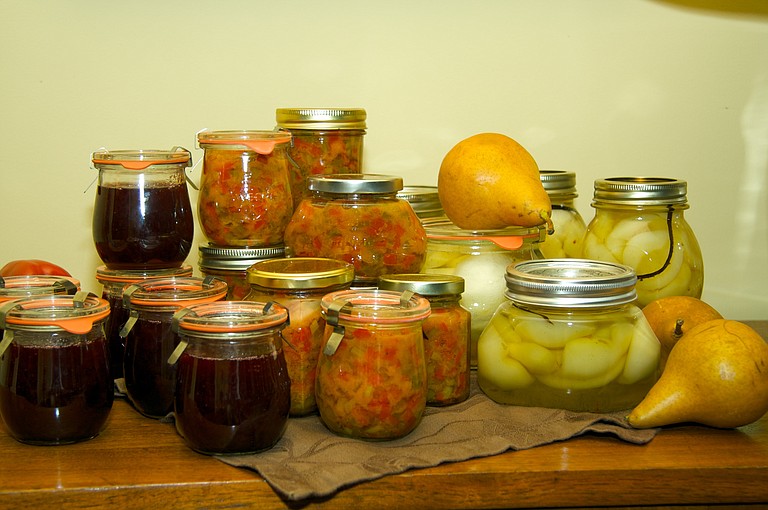Wednesday, July 30, 2014
When I was younger, the summertime sadness always hit me around this time each year. Not because of the end of warm days or because I would have to go back to school, but because soon, all my favorite fruits and vegetables would be out of season, and I'd be stuck with tasteless grocery-store imports and frozen vegetables.
My parents kept dozens of Mason jars in a cabinet, full to the brim with briny pickles, chow chow, tomatoes and okra. I remember watching my family members form an assembly line of cooking, canning and pressurizing, indulging in their natural instinct to store up food for the cold winter months.
Canning is not just for grandmothers, but for anyone who wants year-round access to summertime produce. The options are endless and not limited to veggies and broth. You can store salsas, jams and other fruit preserves for years if canned correctly. Although it isn't the same as having fresh-picked green beans or jalapenos on hand, the original freshness of the contents remain until the jar's seal is broken.
Canning 101
To avoid botulism, always wash your jars and lids with hot soapy water. Keep the jars warm in the pressure cooker until use. While preparing the contents, let the lids simmer in hot water for 10 minutes. Once done with the food prep, remove any foam and add the mixture to the jar, leaving at least half an inch of breathing room. Remove bubbles with a non-metal spatula and wipe off any excess from the outside of the jar with a clean, damp cloth. Place the lids and rings on the jar after carefully removing them from the water, and then put the sealed jars back into the water with at least an inch covering the top. Boil at the recipe's suggested temperature and time and then remove the jars with the tongs and set them on a dish towel to dry and cool. To make sure the process worked, press down on the middle of the lid. If it stays down, the jar is ready to be placed in the pantry for a later time. Some foods, like pickles, require a certain amount of storage time before they you can eat them.
If you aren't ready to commit to the entire process—and it is a process—try your hand at refrigerator pickles. They won't have to be processed, because the vinegar and cool storage area will keep them fresh. You will still want to sterilize the jars and lids, though, and they will only last a few months before they won't be safe to eat any more.
These pickles will last at least six months. That will get you through a few fall days, any way.
What You Need
A pressure cooker with a water-bath feature
Mason jars and lids
Jar tongs
Funnel
Clean rag
Lid lifter
Preservative such as sugar, vinegar pectin or ascorbic acid (depending on the recipe)
Refrigerator Pickles
Ingredients
7 1/2 cups sliced cucumbers
3 sprigs of dill, finely chopped
2 tablespoons minced garlic
1 1/2 teaspoons kosher salt
2 cups sugar
1 1/2 cups white vinegar
1 1/2 teaspoons celery seed
1 1/2 teaspoons mustard seed
1 1/2 teaspoons black peppercorns
Combine all ingredients, then can and store. These pickles taste best after sitting on the shelf for a couple of weeks.

Comments
Use the comment form below to begin a discussion about this content.
Sign in to comment
Or login with:
OpenID